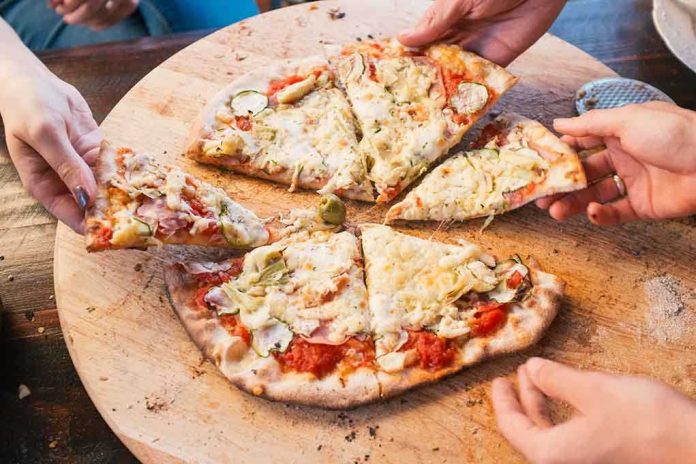
If you think your next diet success depends on ironclad willpower, brace yourself: the company you keep at dinner may determine your waistline more than your inner resolve ever will.
Story Snapshot
- Social influence from peers, family, and colleagues shapes eating habits more than willpower does.
- Large-scale studies reveal dietary choices unconsciously mirror social circles, for better or worse.
- Obesity and healthy habits both “spread” through social networks, fueling public health trends.
- Interventions focusing on group dynamics outperform those targeting individual resolve alone.
Social Influence, Not Willpower, Drives Eating Choices
Harvard-affiliated researchers upended the willpower myth by showing that our food choices are quietly choreographed by the people around us. In a 2021 study, colleagues at Massachusetts General Hospital and Harvard found that eating habits ripple through offices and families, often below the level of conscious awareness. When a group orders fries, you’re more likely to do so—even if you intended on getting a salad. This phenomenon persists at home, work, and especially at social gatherings, where group norms override the best-laid plans of individual dieters. The takeaway? Your “bad” or “good” food decisions may not be as much about your resolve as about your social context.
Early 2000s research first traced how obesity clusters in social networks, with friends and family members’ habits carrying more sway than advertisements or self-help books. By the 2010s, the evidence base had expanded: children, coworkers, and even casual acquaintances played starring roles in shaping eating patterns. Schools and workplaces became laboratories for observing the domino effect of group choices. The research narrative shifted from blaming the individual to scrutinizing the subtle choreography of group behavior. Today, the persistence and unconscious nature of these influences is regarded as a defining factor in the public health crisis of obesity.
The Hidden Mechanisms of Mimicry and Social Modeling
Underpinning this phenomenon is social modeling—the tendency to mirror the actions and preferences of those nearby. Studies reveal that people not only copy what their peers eat, but also unconsciously align portion sizes, meal frequency, and even attitudes toward food. These effects linger even after leaving the immediate group, suggesting that social influence “sticks” long after the party ends. Researchers emphasize the distinction between social influence and homophily, the latter describing our tendency to associate with those similar to ourselves. While homophily explains some clustering, recent studies confirm that direct influence, not just shared preference, plays a central role. Social modeling, it turns out, is a robust force shaping the dietary landscape across generations and communities.
Resistance to these influences remains limited. Most individuals underestimate or outright deny that their choices reflect group norms, assuming personal agency or willpower. This “motivated denial” blinds many to the power of their surroundings. Yet, as experimental evidence accumulates, a consensus emerges: interventions targeting group behaviors and norms outperform those that rely solely on boosting individual grit. Public health campaigns and school lunch reforms increasingly focus on changing the social script—making healthy choices visible, desirable, and contagious within groups. This shift signals a new era in nutrition policy and practice.
Implications for Policy, Industry, and Personal Health
The implications extend far beyond self-help advice. Short-term, individuals—especially children and employees—adopt the eating habits of their peers, with immediate impacts on diet quality and health. Long-term, persistent group norms shape trajectories of obesity or wellness, influencing healthcare costs and quality of life for entire communities. Health officials and educators now recognize that targeting social networks can amplify positive change, with peer-led interventions showing notable success in youth populations. For the food industry, these findings prompt a reevaluation of marketing strategies, as group-targeted campaigns may prove more effective than appeals to individual choice.
Despite mounting evidence, awareness of social influence remains low among the public, leading to resistance against group-based interventions. Some experts argue for greater transparency and education, empowering individuals to recognize and harness positive social forces. Others caution that not all group influence is benign—unhealthy eating can spread as readily as healthy habits. The challenge for policymakers and practitioners is to tip the balance, leveraging social modeling to create healthier communities while respecting individual autonomy. The message is clear: if you want to eat better, bring your friends along for the ride—or risk joining them on a path you never consciously chose.
Sources:
Harvard Gazette: Our co-workers can influence how we eat, study finds
PMC: Social influence on eating
PMC: Social modeling and dietary behavior
Frontiers in Psychology: Social influence and eating














